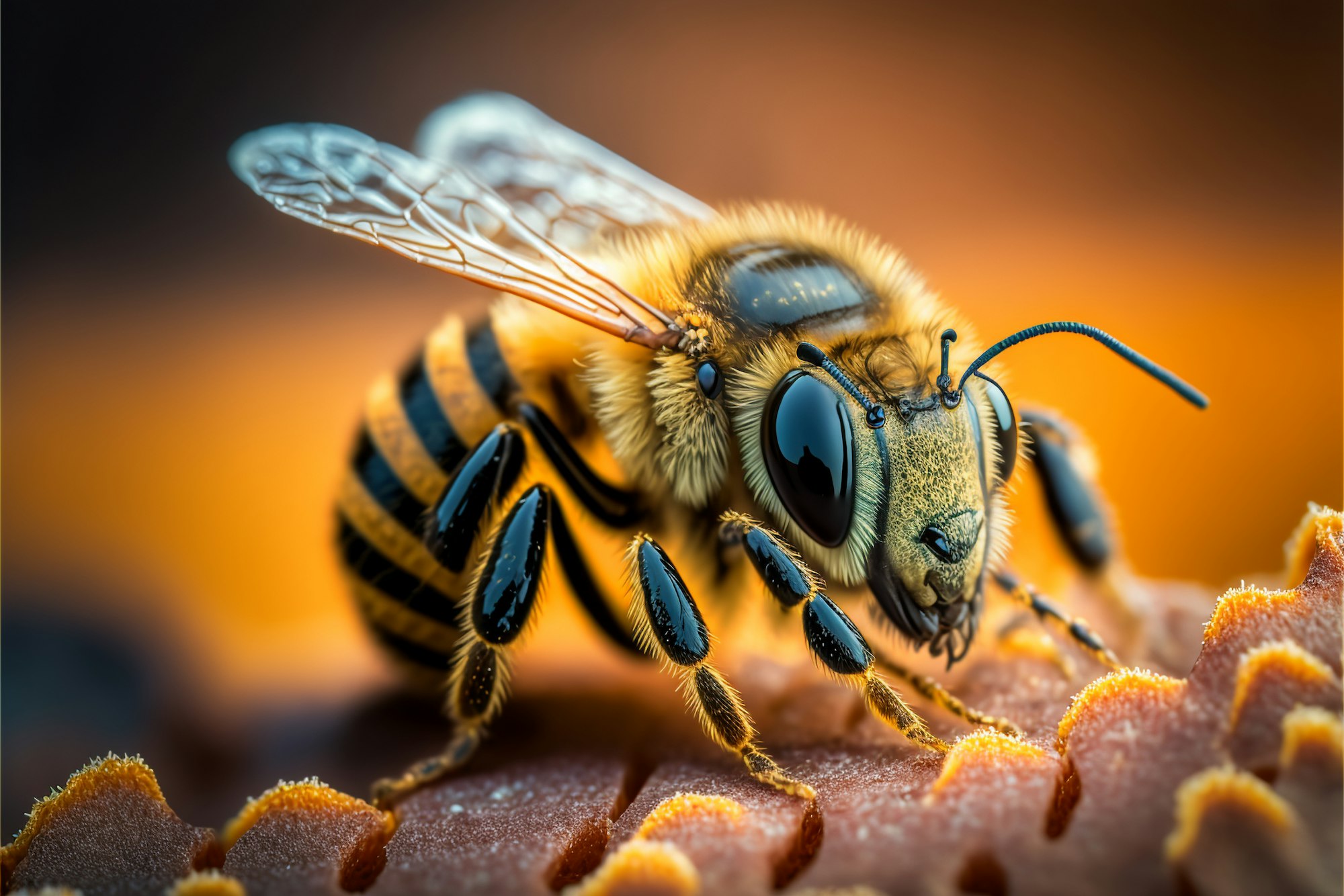Bees are fascinating creatures that play a crucial role in our ecosystem. From their intricate social structures to their impressive work ethic, these tiny insects never cease to amaze us. In this article, we’ll explore some of the most interesting facts about bees that will surely leave you buzzing with excitement!
The Incredible World of Bees
Bee Basics: More Than Just Honey Makers
When most people think of bees, they imagine the familiar honeybee. However, the world of bees is far more diverse than you might expect. There are over 20,000 known species of bees worldwide, with only about 5% of these species producing honey. Surprisingly, bees can be found on every continent except Antarctica, showcasing their adaptability and widespread presence in various ecosystems.
The Vital Role of Bees in Our Ecosystem
Bees are not just fascinating creatures; they’re also essential for our planet’s health. Their primary importance lies in pollination, with bees responsible for pollinating about 75% of global crops – https://factsgem.com/facts-about-bees/. This crucial activity helps maintain the diversity of plant species and supports the entire food chain, as many animals rely on bee-pollinated plants for sustenance.
Interesting Facts About Bee Behavior
The Buzz About Bee Communication
One of the most interesting facts about bees is their complex communication system. Bees use a unique dance, known as the “waggle dance,” to communicate the location of food sources to their hive mates. This intricate dance conveys the direction of the food source relative to the sun, the distance to the food source, and even the quality of the food source. It’s a remarkable example of non-verbal communication in the animal kingdom.
Bee Work Ethic: Nature’s Tireless Workers
Bees are known for their incredible work ethic. A single bee may visit up to 5,000 flowers in a single day, showcasing their tireless efforts in collecting nectar and pollen. To produce just one pound of honey, bees must collect nectar from approximately 2 million flowers. This becomes even more impressive when you consider that the average worker bee lives for just 5-6 weeks, spending almost every waking moment working for the good of the colony.
The Anatomy of a Bee: Designed for Efficiency
Understanding bee anatomy reveals some fascinating adaptations. Bees are equipped with specialized body parts that allow them to perform their vital roles efficiently:
| Body Part | Function |
|---|---|
| Antennae | Smell, touch, and taste sensors |
| Compound Eyes | Detect movement and navigate |
| Proboscis | Straw-like tongue for sucking nectar |
| Pollen Baskets | Structures on hind legs for carrying pollen |
| Stinger | Defense mechanism (only in female bees) |
Bee Vision: A Different Way of Seeing the World
One of the most interesting facts about bees is their unique vision. Bees can see ultraviolet light, which is invisible to humans. They use this ability to detect patterns on flowers that guide them to nectar sources. Interestingly, while bees can’t see the color red, they can see blue better than humans can. This specialized vision helps them navigate their environment and locate food sources with incredible precision.
The Social Structure of Bee Colonies
Bee Roles: A Well-Organized Society
Bee colonies are marvels of organization, with each member playing a specific role. The queen bee is the only female capable of laying fertilized eggs and can lay up to 2,000 eggs per day. She typically lives for 3-5 years. Worker bees, all female, perform various tasks such as nursing, cleaning, guarding, and foraging. These industrious insects live for only 5-6 weeks during busy seasons. Drones, the male bees, have the primary role of mating with queens from other colonies, after which they die.
The Superorganism: Hive Mind in Action
One of the most fascinating interesting facts about bees is how the colony functions as a single organism. Bees regulate hive temperature collectively, make decisions as a group (such as choosing new nest sites), and prioritize the colony’s health over individual bees. This collective behavior allows the hive to operate efficiently and adapt to changing environmental conditions.
Bees and Human Interaction
The Sweet History of Beekeeping
Humans have been fascinated by bees for thousands of years. Beekeeping dates back to at least 2400 BCE in ancient Egypt, showcasing the long-standing relationship between humans and these industrious insects. In some ancient societies, honey was even used as a form of currency, highlighting its value. Beeswax, another valuable product, has been used for centuries in candles, cosmetics, and art.
Threats to Bee Populations and How We Can Help
Despite their importance, bee populations face several challenges, including pesticide use, habitat loss, climate change, and parasites and diseases. However, there are ways we can contribute to bee conservation. Planting bee-friendly flowers in our gardens, avoiding pesticide use, supporting local beekeepers by buying local honey, and creating “bee hotels” for solitary bee species are all effective ways to help protect these vital pollinators.
Fascinating Bee Products
Bees produce more than just honey. Beeswax, a versatile substance used in candles, cosmetics, and food preservation, is waterproof and naturally antibacterial. Propolis, a resin-like substance used to seal gaps in the hive, has antibacterial and antifungal properties. Royal jelly, produced to feed queen bee larvae, is rich in proteins and vitamins and has gained popularity as a health supplement.
Conclusion: The Buzzing Wonders of Nature
As we’ve explored these interesting facts about bees, it’s clear that these tiny insects are truly remarkable creatures. From their complex social structures to their vital role in our ecosystem, bees continue to fascinate and inspire us. By understanding and appreciating bees, we can work towards protecting these essential pollinators for future generations.
Remember, every time you see a bee buzzing from flower to flower, you’re witnessing a small but crucial part of nature’s grand design. Let’s do our part to ensure these amazing insects continue to thrive and keep our world blooming!
